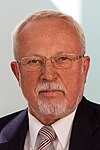1990 East German general election
| ||||||||||||||||||||||||||||||||||||||||||||||||||||||||||||||||||||||||||||||||||
All 400 seats in the Volkskammer 201 seats were needed for a majority | ||||||||||||||||||||||||||||||||||||||||||||||||||||||||||||||||||||||||||||||||||
|---|---|---|---|---|---|---|---|---|---|---|---|---|---|---|---|---|---|---|---|---|---|---|---|---|---|---|---|---|---|---|---|---|---|---|---|---|---|---|---|---|---|---|---|---|---|---|---|---|---|---|---|---|---|---|---|---|---|---|---|---|---|---|---|---|---|---|---|---|---|---|---|---|---|---|---|---|---|---|---|---|---|---|
| ||||||||||||||||||||||||||||||||||||||||||||||||||||||||||||||||||||||||||||||||||
| ||||||||||||||||||||||||||||||||||||||||||||||||||||||||||||||||||||||||||||||||||
Legislative elections were held in East Germany on 18 March 1990. It was the first—and as it turned out, only—free parliamentary election in the GDR, and the first truly free election held in that part of Germany since 1933. A total of 400 deputies were elected to the Volkskammer, the plurality of them from the opposition pro-unification Alliance for Germany, led by the East German branch of the Christian Democratic Union. The former Socialist Unity Party of Germany participated under its new name, Party of Democratic Socialism and received the third largest number of seats. On 5 April 1990, the new Volkskammer elected the CDU member Sabine Bergmann-Pohl as its president; as the State Council was at the same time dissolved, she became East Germany's head of state. Lothar de Maizière (CDU) became prime minister, heading a grand coalition consisting of the CDU, the SDP, the FDP, the German Social Union (DSU) and one non-attached member.[1]
On 3 October of the same year the parliament voted to dissolve East Germany and to unify its territory with the Federal Republic of Germany, thus ending the state's 40-year existence. The unification treaty was approved on a 442–47 vote by the Bundestag and by a 299–80 margin in the Volkskammer.[2]
Results
References
- ^ "History of German parliamentarianism: 1949–89: Volkskammer of the GDR (East-Germany)". German Bundestag. 2008-11-19.
- ^ "Politics in Germany: The Online Edition". University of California, Irvine. 2008-11-19.
- ^ Geoffrey Pridham, Tatu Vanhanen. Democratization in Eastern Europe Routledge, 1994. ISBN 0-415-11063-7 pp. 135




